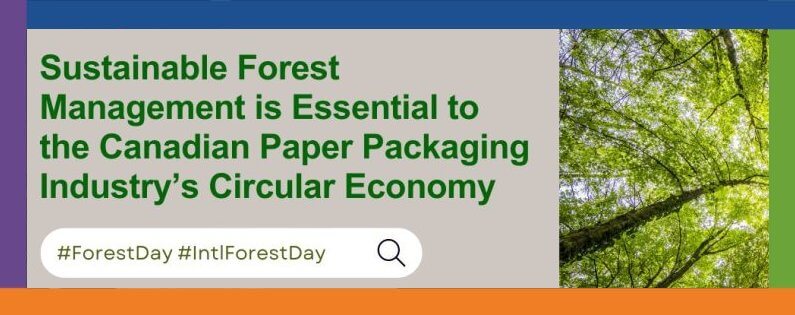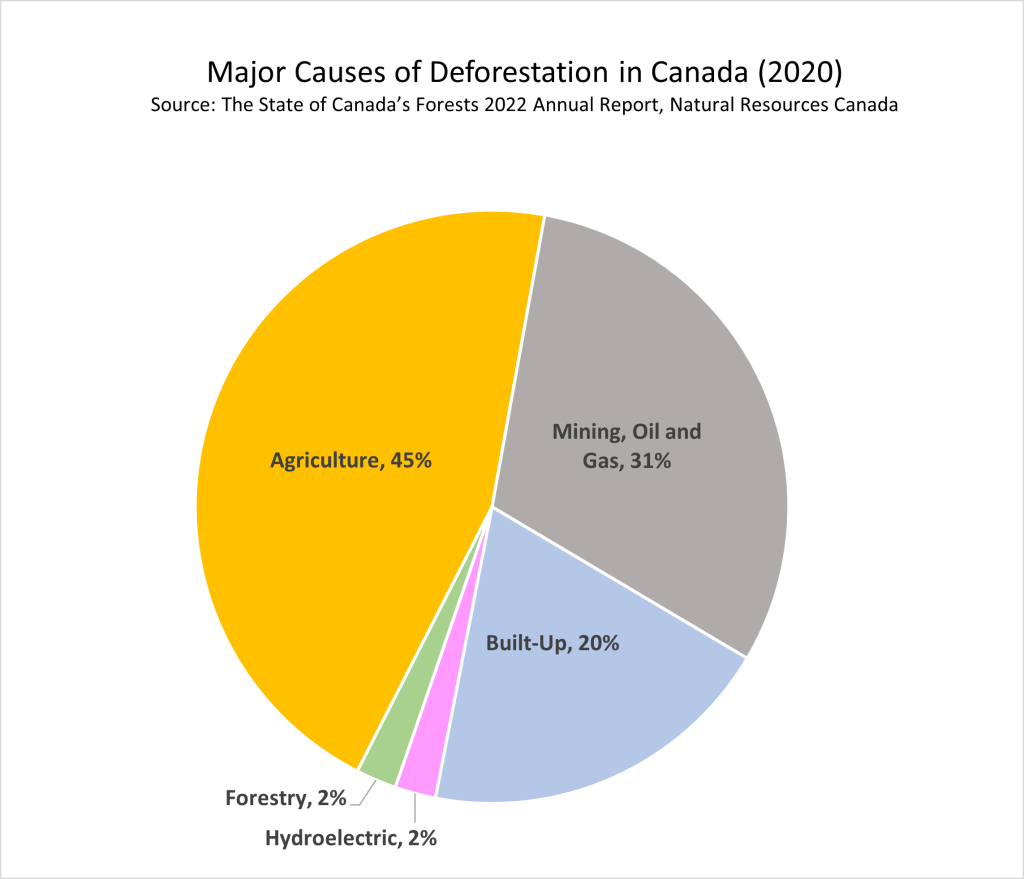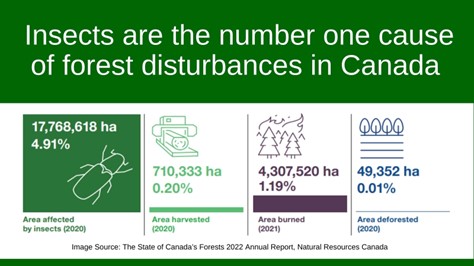Sustainable Forest Management is Essential to Canada’s Paper Packaging Industry

Article By Rachel Kagan | This article was originally published on ppec-paper.com.
Sustainable forest management is essential to the Canadian paper packaging industry and its circular economy.
Environmental sustainability is at the core of the operations of Paper and Paperboard Packaging Environmental Council (PPEC) member companies, who use recycled content as their primary feedstock in making paper packaging products.
And yet, misconceptions surrounding forestry and paper packaging persist when it comes to how paper packaging is made.
With today’s International Day of Forests, PPEC would like to clear up some of these misconceptions and provide the facts about how Canada’s forests are managed, what is harvested, the causes of deforestation, and how paper packaging is made, and re-made, again and again, through the action of recycling.
FACT: The Canadian paper packaging industry does not harvest much of Canada’s forests (and what is harvested must be regenerated)
While most paper packaging made in Canada is produced with recycled content, the paper fibres it was originally made from came from a tree. However, the Canadian paper packaging industry doesn’t use much in the way of freshly cut trees, and the little that is harvested must be successfully regenerated by Canadian law.
The Canadian government conserves and protects its forests through strict laws and science-based sustainable forest management practices, which stipulate that all areas harvested on public land (about 90% of Canada’s forests are on public land) must be reforested, either by tree replanting or through natural regeneration (which occurs when new seedlings or sprouts are produced by fallen trees).
According to the latest data from Natural Resources Canada’s State of Canada’s Forests Annual Report, in 2020, the total forest harvest for all lumber (which includes market pulp, packaging, tissue, newsprint, and printing and writing paper) represented 0.2% of Canada’s forest land, while 600 million seedlings were planted, up from 440 million in 2018.
FACT: Paper packaging is not a major cause of deforestation in Canada
There is also an important distinction between harvesting and deforestation.
Deforestation is when forest land is permanently cleared and converted to make way for new, non-forest land use.
And according to Canada’s National Deforestation Monitoring System, Canada’s 347 million hectares of forest area is stable, with less than half of 1% deforested since 1990.
In 2020, deforestation accounted for 49,352 hectares of area permanently changed, primarily by the agriculture, mining, oil and gas, and built-up (new homes, ski hills, and golf courses) sectors, which together represent 96% of deforestation in Canada.
FACT: Insects are the number one cause of forests disturbances in Canada
Canadian forests are most affected by natural disturbances such as insect infestations, diseases, and fires.
In 2020, insects represented the largest cause of disturbance with 17.7 million hectares of area defoliated. The second largest cause was fires with 4.3 million hectares of area burned in 2021 (the largest on record since 1990).
FACT: Most paper packaging made in Canada is made from recycled content
Over 80% of Canadian-made containerboard (used to make corrugated boxes) and boxboard (used to make boxboard cartons) are made from recycled content fibres, according to PPEC’s 2022 Recycled Content Survey. Recycled content keeps valuable raw materials out of landfill and flowing for longer, reducing the need to extract virgin materials.
Mills also use sawmill residues – such as wood chips, shavings and sawdust left over from sawmill operations – and some supplement their pulp with virgin fibres from trees. The mixture of using primarily recycled content, along with some new fibres from sustainably managed forests, is an important component to paper packaging’s circular economy.
It is through that important act of recycling that allows paper packaging to be continually collected so it can be reused and remade into new paper-based packaging products again and again.
FACT: Mills use independent certification to verify their paper fibres are responsibly sourced
All paper fibres used are verified to be responsibly sourced by independent, third-party certification bodies. In Canada, there are three internationally recognized forest certification organizations: Sustainable Forestry Initiative (SFI), Forest Stewardship Council (FSC), and the Canadian Standards Association (CSA Z809). These organizations assess forestry operations against standards for sustainable forest management, and complements Canada’s rigorous forest management laws and regulations.
FACT: Paper packaging is made from a renewable resource that is sustainably managed, responsibly sourced, and actively recycled
On International Day of Forests, and every day, it is important to remember that Canada’s forests are stable and sustainably managed.
When we use and recycle paper-based packaging, we all play an important role in protecting and replenishing our renewable resources and contributing to the sustainable management of Canada’s forests, while supporting the circular economy of the paper-based packaging industry.







Leave A Comment